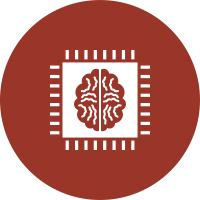
Artificial Intelligence
Artificial Intelligence (AI) is a promising new technology with potential applications in a wide variety of intervention and research areas. Artificial Intelligence can be used as an intervention method to help children and adults learn new behaviors and strategies. It can also be used for training parents and caregivers, and when used for training can increase adherence to standardized protocols.
 Mobile Devices
Mobile Devices
Mobile devices have many applications in research. Ecological Momentary Assessment (EMA) provides the researcher with a snapshot of what a person is doing or feeling the moment a text message is received. Mobile devices can also contain intervention programs in the form of apps. These programs can be reading material or in the form of games. Additionally, apps for mobile devices can be used for data collection.
 Eye Tracking
Eye Tracking
Eye-tracking demonstrates what catches people’s attention and how long they choose to look at something on a computer screen. Eye tracking can be stationary, done while sitting at a computer looking at images chosen by the researcher. Eye tracking can also be mobile, using a 3-dimensional device, eye-tracking glasses. These can be worn in order to track what is being looked at as a person walks around, talks, and interacts with others.
 Acti-Watch
Acti-Watch
Acti-Watches and Fit Bits are used to monitor individual activity. Acti-watches can also be used to monitor sleep. When worn at night, an acti-watch will record movements and collect data that describe both the total amount of sleep a person is getting, the number of interruptions, also called sleep fragmentation, as well as the phases of sleep people have gone through.
 Gaming
Gaming
Video game technology has a whole range of applications in research. Games can be used simultaneously as an intervention technique and as a learning tool. Researchers studying autism use game technology to help train children to look at faces. Games have also been created to help teach children about home safety.
 Web & Social Media
Web & Social Media
Web-based interventions and data collection have become popular because most people own computers. Individuals can participate in research and complete intervention and trainings in their own home without having to travel to a specific location. Analyzing social media allows researchers to explore individual’s online interactions, and relate that to other outcomes in their lives.





